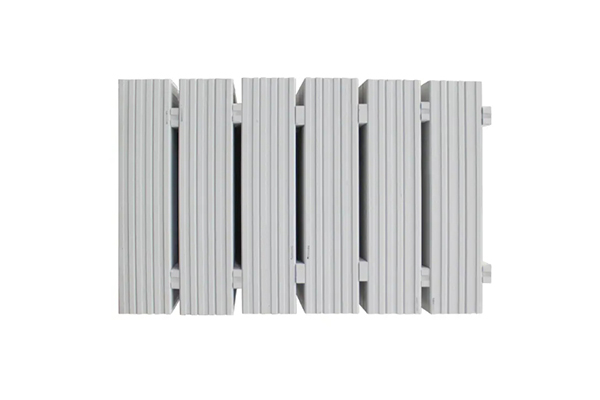Autoclaved Aerated Concrete (AAC) and Autoclaved Lightweight Concrete (ALC) are two building materials commonly used in modern construction for their lightweight, durable, and energy-efficient properties. Both AAC and ALC are produced through a similar autoclaving process, which involves curing under high-pressure steam to enhance the material’s strength. However, there are distinct differences between AAC and ALC, including their composition, uses, and specific properties. In this article, we will explore the differences between AAC and ALC to help clarify their unique features and applications.
What is AAC?
Autoclaved Aerated Concrete (AAC) is a type of lightweight, precast foam concrete that is highly porous. It is made from a mixture of cement, lime, sand, water, and a small amount of aluminum powder, which acts as an aerating agent. The aluminum reacts with the lime and water to create hydrogen gas, forming millions of tiny air bubbles throughout the concrete. This gives AAC its characteristic lightweight and insulating properties.
AAC is primarily used in the construction of walls, partitions, and floors, offering significant advantages in terms of insulation, fire resistance, and ease of installation.
What is ALC?
Autoclaved Lightweight Concrete (ALC) is a form of AAC, but it is typically designed in the form of reinforced panels. Like AAC, it is produced using similar raw materials—cement, lime, silica sand, water, and aluminum powder—combined and autoclaved to create a lightweight and durable concrete product. However, ALC panels are often reinforced with steel bars or meshes to enhance their structural integrity, making them suitable for load-bearing applications.
ALC is used for a variety of construction applications, particularly in walls, floors, and roofs, providing a versatile building solution with high strength, thermal efficiency, and fire resistance.
Key Differences Between AAC and ALC
While AAC and ALC share similarities in their production process and raw materials, there are key differences that set them apart, especially in terms of their composition, structural uses, and specific properties.
1. Form and Structure
- AAC: AAC is typically manufactured as blocks or panels without any internal reinforcement. It is a lightweight material used primarily for non-load-bearing walls, partitions, and other internal structures. AAC blocks are commonly used in residential and commercial buildings where insulation and fire resistance are critical, but they are not intended to support heavy structural loads.
- ALC: ALC, on the other hand, is often produced as reinforced panels that include steel bars or wire meshes to improve their load-bearing capacity. This makes ALC suitable for both load-bearing and non-load-bearing applications. ALC panels are frequently used for external walls, floors, and roofing systems in industrial, commercial, and residential buildings.
2. Reinforcement
- AAC: AAC blocks are generally non-reinforced, meaning they do not contain any steel reinforcements. They are designed to be lightweight, easy to handle, and ideal for insulation, but their structural strength is limited. Consequently, AAC is often used in partition walls, where high load-bearing capacity is not a primary requirement.
- ALC: ALC panels are typically reinforced with steel, which significantly enhances their strength and load-bearing capacity. The reinforcement allows ALC panels to be used in structural applications such as exterior walls, floors, and roofs that need to support more weight. This additional strength is one of the major differences between AAC and ALC.
3. Application Scope
- AAC: Due to its lightweight and insulating properties, AAC is most commonly used for internal partitions, infill walls, and non-load-bearing structures. It is popular in residential buildings and low-rise structures, where thermal insulation and fire resistance are essential. AAC is also favored for its ease of installation, as its lightweight nature reduces the labor and time required for construction.
- ALC: ALC panels are used in a broader range of applications, including both load-bearing and non-load-bearing structures. The reinforcement within ALC panels allows them to be used in high-rise buildings, external walls, flooring systems, and roofing applications. ALC is particularly valuable in industrial and commercial construction, where structural strength and durability are critical.
4. Thermal and Acoustic Properties
Both AAC and ALC offer excellent thermal and acoustic insulation properties due to their porous, aerated structure. However, since AAC blocks are often thicker than ALC panels and are used in non-reinforced forms, they tend to have slightly better thermal insulation properties. AAC is highly effective at reducing heat transfer, making it a popular choice in climates where temperature regulation is crucial.
ALC panels, while still providing good insulation, are typically thinner and reinforced, which may slightly reduce their thermal insulation compared to AAC blocks. However, ALC panels generally offer superior soundproofing due to their reinforced structure, which can better dampen sound waves.
5. Weight and Handling
- AAC: AAC is lighter than ALC, which makes it easier to transport, handle, and install. This is one reason why AAC blocks are so widely used in residential construction and DIY projects.
- ALC: ALC is heavier due to the steel reinforcements, making the panels more challenging to handle and requiring additional support during transportation and installation. However, ALC’s increased weight also corresponds to its enhanced structural strength, making it suitable for load-bearing purposes.
Conclusion
AAC and ALC are both valuable building materials, each with its own set of advantages depending on the specific needs of a project. AAC is best suited for non-load-bearing applications where thermal insulation, fire resistance, and ease of installation are the primary concerns. On the other hand, ALC’s reinforced structure makes it ideal for load-bearing applications, such as external walls, floors, and roofs, where higher strength and durability are required.
Understanding the differences between AAC and ALC will allow architects, engineers, and builders to select the most appropriate material for their projects, optimizing both the performance and cost-efficiency of the construction process.
Post time: 9 月-24-2024






